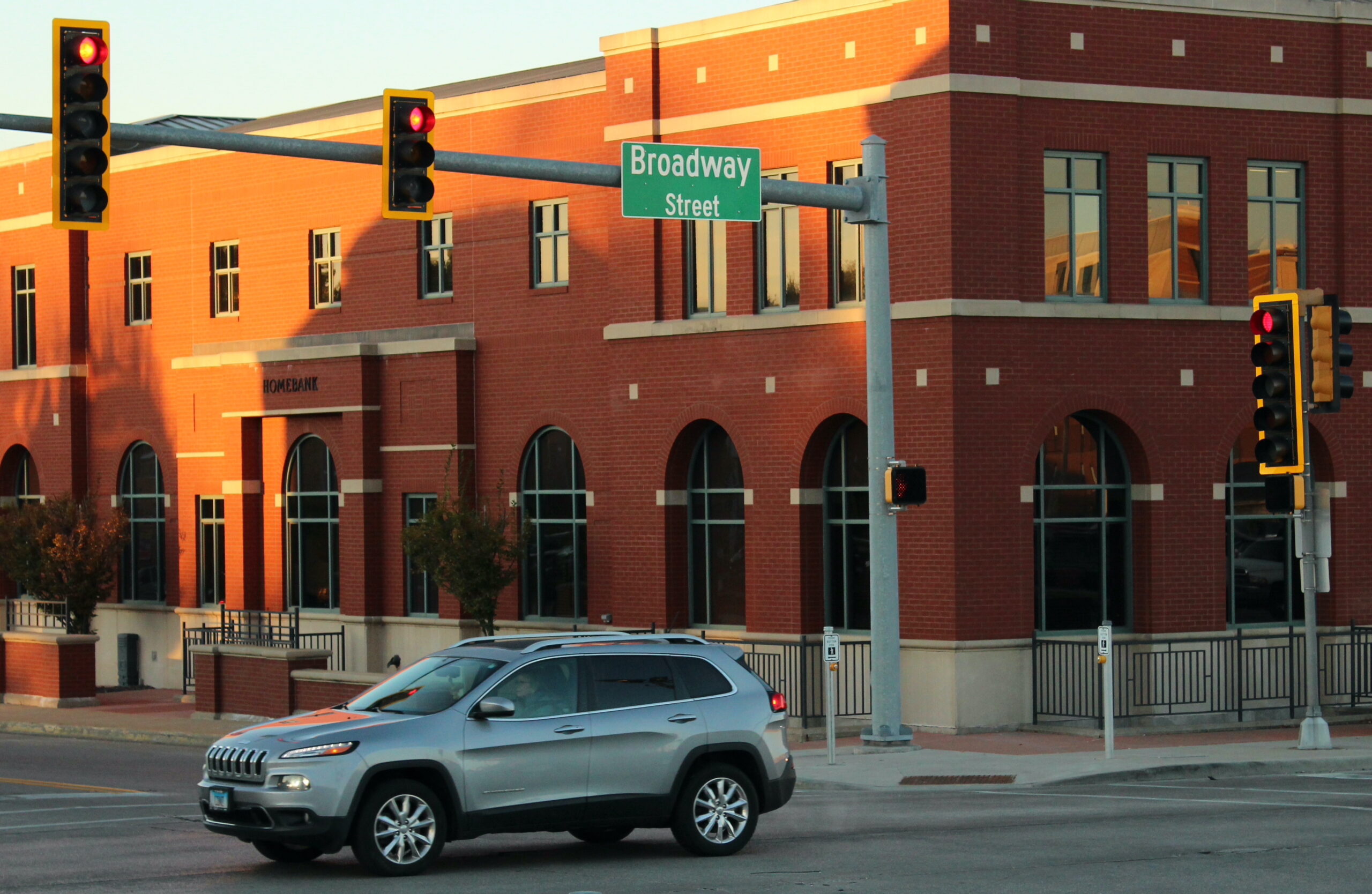Ask MRN: What is the longest red light in Quincy?

What is the longest red light in Quincy? What determines the length of red lights?
Muddy River News reached out to the engineering departments for the city of Quincy and the Illinois Department of Transportation for help with this question.
Mike Boll is the traffic signal coordinator for the city. He works with the inspection, installation, maintenance and repair of 57 traffic signal devices in Quincy.
“There are a lot of variables that make answering the question, ‘What is the longest red light in Quincy?’ hard to answer,” Boll said. “The answer to the second question, ‘What determines the length of red lights?’, will help explain this.”
Boll said red light time protects drivers from opposing traffic which has a green light. Many city intersections, such 30th and Maine, don’t have vehicle detection. They run on fixed time — generally 30 seconds of green light, followed by yellow and then red. Boll called it the most basic signalized intersection.
Signals coordinated along Broadway help with daytime traffic flow
“When you add in variables like vehicle detection, pedestrian push buttons and traffic signal coordination, the length of time that you may sit at a red light can vary greatly,” Boll said.
Intersections with vehicle detection, such 12th and State, may have a shorter green light if traffic has been served in a particular direction. That allows the opposing traffic to receive a green light more frequently.
“At this same intersection, if someone was to push the pedestrian button, the signal will stay green longer for that direction to allow enough time to walk across the intersection,” Boll said.
Boll said signals along Broadway in Quincy are coordinated to help with daytime traffic flow. However, that coordination is turned off at night. He said the longest cycle for a light to remain green (without detecting a vehicle) on Broadway is 120 seconds.
He said if any type of detection have an equipment failure, they could send a constant call for service to the controller, making the intersection less efficient. They also could not send a call at all, leaving the controller to believe that direction has no traffic.
“All of these failures can only be discovered at the intersection,” Boll said. “I perform periodic inspections to look for these types of problems. Many times I’m unaware of a problem until it is reported to our office.”
Quincy has 57 signalized intersections; 33 are on IDOT-maintained roads
Quincy has 57 signalized intersections, and 33 are on roads maintained by the Illinois Department of Transportation. Illinois 104 (Broadway), Illinois 57 (Gardner Expressway) and Illinois 96 (24th Street north from State and 36th Street south from State) would be on that list. The city maintains those signals through an intergovernmental agreement with IDOT.
Paul Wappel, public information officer for the Illinois Department of Transportation in Springfield, reached out to IDOT’s engineering staff to help with MRN’s question.
“IDOT does not program a specific amount of red time for traffic signals,” the engineering staff replied. “For the majority of state signals, IDOT uses some form of vehicle detection to tell the signals where vehicles are located. The signals only go green or hold the green longer for a particular direction if a vehicle is detected. It also helps the signals run more efficiently than just using pre-set specific signal times for each direction.”
A minimum and maximum amount of green time is programmed for each direction at IDOT locations with vehicle detection signals. The amount of time a motorist may have to wait at an IDOT intersection can vary widely with multiple variables involved, some of which are:
- At what point in the signal cycle the motorist arrives at the intersection.
- If the signal is running a coordinated timing program with other nearby signals or is timing independently based solely on vehicle detection.
- How much allotted green time has been used.
- If any pedestrians activated the walk / don’t walk pedestrian signals.
“Ultimately, the duration of a red light for a particular direction is determined by the amount of green time displayed for all the other conflicting directions,” the engineering staff wrote.
Longest red light in America is in West Milford, N.J.
We couldn’t come up with the answer to the longest red light in Quincy. However, we did find the longest red light in America. It’s at the intersection of Route 23 and Clinton Avenue in West Milford, N.J. KTDY Radio in Lafayette, La., did a story about that intersection in April 2021, and the New York Times also wrote about it in 2001.
It’s actually two traffic lights with a combined wait time of about 5 minutes, 30 seconds. The two red lights are timed to last up to two minutes 45 seconds. The green light only lasts only 8 seconds.
The New Jersey Department of Transportation gets many complaints about the red lights but doesn’t plan to change or alter the timing of the two traffic lights. Both are adjusted to ease rush hour traffic.
Wondering about something in your community? Ask Muddy River News. We will talk with community leaders, business leaders, historians, educators … anybody who might provide an answer to what you want to know. Submit questions (and maybe even a photo) to news@muddyrivernews.com. Please provide a name and phone number. Questions about personal or legal disputes are not accepted.
Miss Clipping Out Stories to Save for Later?
Click the Purchase Story button below to order a print of this story. We will print it for you on matte photo paper to keep forever.

